Kenya tourism is one of the great destinations that have attracted millions of trekkers and tourists to the African continent.
Tourism in Kenya is the second-largest source of foreign exchange revenue following agriculture. The Kenya Tourism Board is responsible for maintaining information pertaining to tourism in Kenya.
Beach tourism, eco-tourism, cultural tourism, and sports tourism are all part of the tourism sector in Kenya. During the 1990s, the number of tourists traveling to Kenya decreased, partly due to the well-publicized murders of several tourists. However, now tourism in Kenya is one of the safe and leading sources of foreign exchange along with coffee.
Kenya is located in East Africa bordering the Indian Ocean in south-east, neighboring countries are Ethiopia, Somalia, South Sudan, Tanzania and Uganda.
Recommended reading.. Interesting Facts and Figures About Kenya
See Kenya travel requirements for international travelers.
What kind of Kenya tourism is popular?
The popular tourist attractions that tourist can explore or visit in Kenya for tourism include the following;
- Mombasa
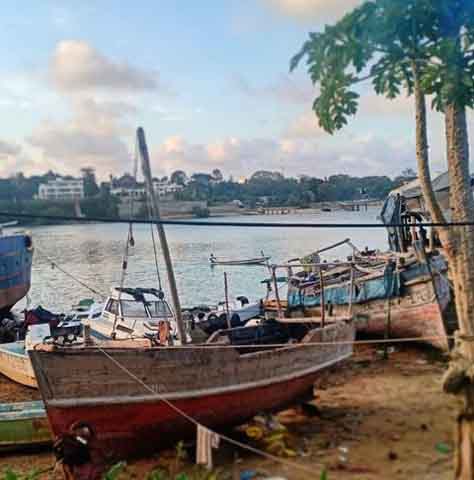
Kenya tourism is not worth visiting without exploring Mombasa. Mombasa is a multicultural tourist magnet. It’s also Kenya’s second largest city and biggest port. British, Portuguese, Arab, Indian, and Asian immigrants add to the rich cultural mix, and their influence is evident in the architecture, as well as the many different types of cuisine.
Mombasa is an island connected to its mushrooming development on the mainland by a causeway, bridges, and ferries. Coral reefs fringe the coast for 480 kilometers, providing fantastic snorkeling and diving opportunities, especially at Mombasa Marine National Park and around Wasini Island. Dolphin watching and deep-sea fishing are also popular things to do in Mombasa.
In Mombasa, there are lots of tourist attractions along the Kenyan coast here. History buffs will enjoy exploring the 16th-century Fort Jesus and Old Town with its narrow streets, ancient Swahili dwellings, markets, and souvenir shops. Other Mombasa tourist attractions cram the city’s north shore, including Mombasa Go-Kart, cinemas, sports, and a cornucopia of restaurants.
Budget accommodation in Mombasa
- Lamu Island
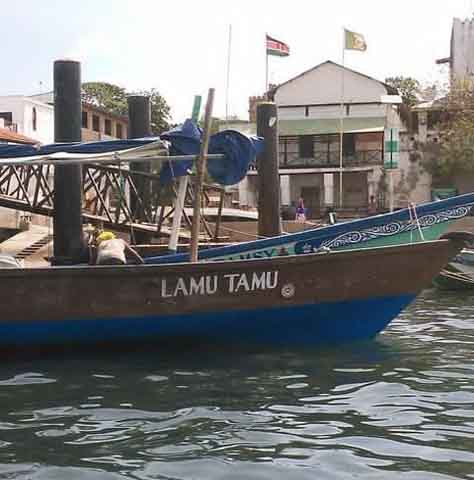
The Island of Lamu is a heritage of UNESCO that can be located on the north-eastern part of Mombasa. The small Island is one of the oldest settlements inhabited since the 12th century.
On the streets of the Lamu Island, explorers can see rich trading history reflected in the buildings. Architectural features from the Arab world, Europe, and India are evident, yet with a discernible Swahili technique. Intricately carved wooden doors, coral stone buildings, hidden courtyards, verandas, and rooftop patios are common features.
Sightseeing here is like stepping back in time. Dhows plow the harbor, few if any motorized vehicles exist here, and donkeys still rule the streets as they have done for centuries. Most of Lamu’s population is Muslim, and both men and women dress in traditional attire. Top attractions on the island include Lamu Museum, with displays on Swahili culture and the region’s nautical history; Lamu Fort; and the Donkey Sanctuary.
Get accommodation on Lamu Island here.
- Mount Kenya
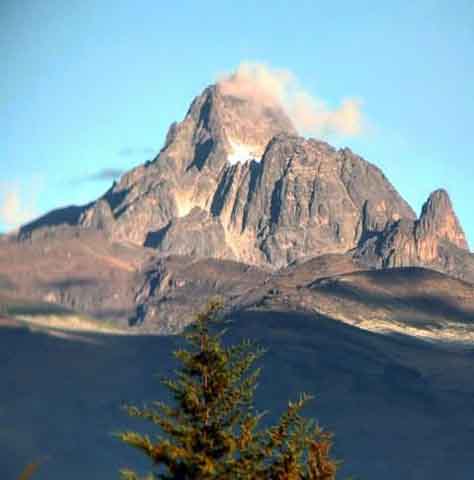
Mount Kenya National Park is a UNESCO World Heritage Site that provides the rare spectacle of equatorial snow. It encompasses the country’s namesake highest mountain at 5,199 meters. It is situated in the Central Highlands, east of the Great Rift Valley.
It was formed as a result of a series of volcanic eruptions. Mount Kenya is actually comprised of three glacier-cloaked peaks. The highest is Batian, although Nelion, the next highest, is a tougher climb. The lowest peak, Lenana, is considered the easiest climb, although unpredictable weather can pose challenges. The striking scenery varies from glaciers, lakes, and mineral springs to alpine forest and dense pockets of bamboo.
The mountain has a diversity of flora and fauna provides rewarding opportunities for safaris. Among the wildlife here, you can explore some spot of black and white colobus monkeys, buffalo, elephant, tree hyrax, leopard, and hyena. Nestled in the foothills, the famous Fairmont Mount Kenya Safari Club is a luxury retreat with trout fishing, golf, and tennis.
You can make arrangement of this Kenyan tourism by booking through the official tourism board board.
See available hotels and lodges at Mount Kenya National Park
- Hell’s Gate National Park
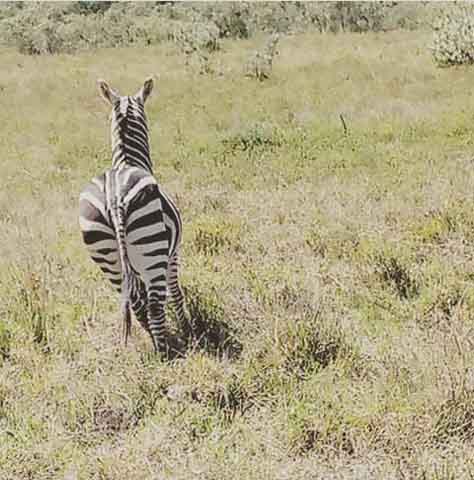
Another tourist attraction as far as Kenya tourism is concern is the Hell’s Gate National Park. A hot spot for climbers, Hell’s Gate National Park is one of the few parks in Kenya that allows camping and enables you to explore on foot or bicycle.
The park offers an excellent climbing and hiking opportunities from the two extinct volcanoes (the red cliffs of Hell’s Gate Gorge also known as the Obsidian Caves) and the pointed column of rock known as Fischer’s Tower, a former volcanic plug.
Geothermal features include hot springs and natural geysers hissing steam through vents in the earth’s crust. The park also protects a wide variety of wildlife, including leopards, baboons, hartebeest, eland, ostriches, gazelles, and more than 100 species of birds. Eagle and vulture breeding grounds also lie within the park.
The Oloor Karia Maasai Cultural Centre within the park is also worth a visit, with Maasai singing, dancing, and jewelry-making demonstrations. Interestingly, Olkaria Geothermal Station lies within Hell’s Gate National Park. It generates power from heated, pressurized water underground and is the first of its kind in Africa.
- Tsavo National Park
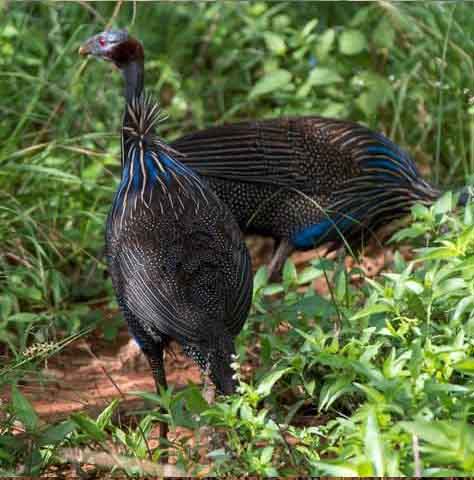
Tsavo National Park is Kenya’s largest park. Tsavo, is sliced in two namely; Tsavo West and Tsavo East. Together these parks comprise four percent of the country’s total area and encompass rivers, waterfalls, savannah, volcanic hills, a massive lava-rock plateau, and an impressive diversity of wildlife.
Midway between Nairobi and Mombasa, Tsavo East is famous for photo-worthy sightings of large elephant herds rolling and bathing in red dust. The palm-fringed Galana River twists through the park, providing excellent game viewing and a lush counterpoint to the arid plains. Other highlights here include the Yatta Plateau, the world’s longest lava flow; Mudanda Rock; and the Lugard Falls, which spill into rapids and crocodile-filled pools.
Tsavo West is wetter and topographically more varied, with some of the most beautiful scenery in the northern reaches of the park. Highlights here are Mzima Springs, a series of natural springs with large populations of hippos and crocodiles; Chaimu Crater, a great spot for seeing birds of prey; and Ngulia Rhino Sanctuary. Wildlife is not as easy to see in Tsavo West because of the denser vegetation, but the beautiful scenery more than compensates.
Where to Stay in Tsavo National Park
- Ol Pejeta conservancy
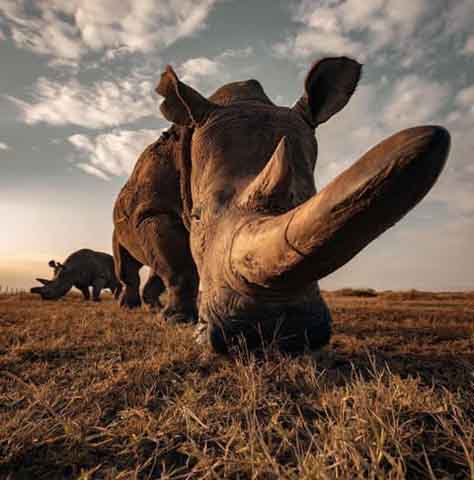
Ol Pejeta Conservancy is a prime place for close-up wildlife encounters. The conservancy is about 200 kilometers north of Nairobi, near Mount Kenya National Park. The conservancy is perhaps best known for its northern and southern white rhinos, including Baraka, a blind black rhino, who lucky visitors might have the chance to feed.
Conservation and sustainability are key at this 90,000-acre private game reserve, where you can view the Big Five (lion, leopard, rhino, elephant, and buffalo), as well as other animals such as cheetah, hyenas, zebra, and hartebeest – all set against the breathtaking backdrop of snowcapped Mount Kenya.
Tourists can explore the wildlife on self-drive or guided tours, and entry includes a visit to the chimpanzee sanctuary. Day visitors are welcome, and if you want to extend your wilderness adventure, you can stay overnight in accommodations that range from bush camps and safari cottages to a charming colonial ranch house. More information on visiting and bookings the Ol Pejeta Conservancy can be done this official site.
- Mara triangle
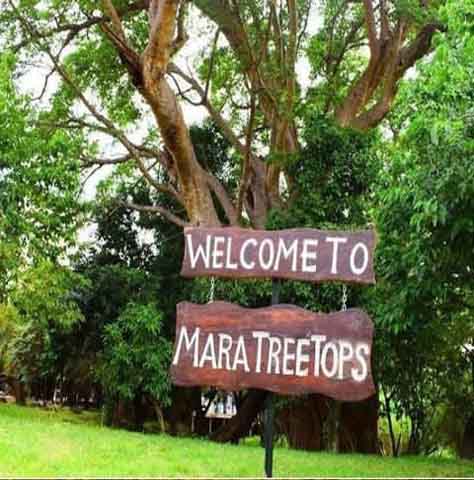
The Mara Triangle is the southwestern part of the Maasai Mara National Reserve, Kenya, and is managed by the not-for-profit organisation The Mara Conservancy on behalf of Trans-Mara County Council.
Divided from the rest of the Maasai Mara National Reserve by the Mara River, the Mara Triangle is less visited and less crowded, with a fairly good concentration of wildlife all year-round including the Big Five (lion, leopard, elephant, buffalo and rhino) and diverse plains ‘game’ such as cheetah, hyena, jackal, wildebeest, zebra, giraffe, waterbuck and many other species.
The Mara Triangle is one of the areas where herds of the Great Migration enter and exit the Maasai Mara National Reserve from the Serengenti National Park in Tanzania, making it one of the prime viewing locations for this wildlife spectacle. Crossings of the Mara River are world-renown for being particularly dramatic, featuring in many wildlife documentaries such as Wild Africa and Big Cat Diary.
- Lake Nakuru Park
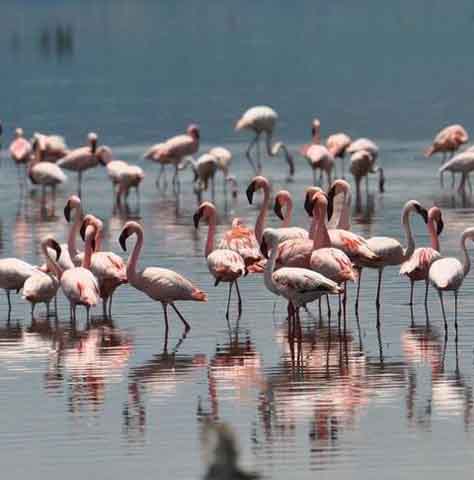
Lake Nakuru National Park is situated in the central part of Kenya. Lake Nakuru Park was established in 1961 and more than 450 species of birds have been recorded, as well as a rich diversity of other wildlife. It is popular for the huge flocks of pink flamingos.
The birds throng on Lake Nakuru itself, one of the Rift Valley soda lakes that covers almost a third of the park’s area. Lions, leopards, warthogs, waterbucks, pythons, and white rhinos are just some of the animals you might see, and the landscapes range from sweeping grasslands bordering the lake to rocky cliffs and woodland.
The park also protects the largest euphorbia candelabrum forest in Africa. These tall, branching succulents are endemic to the region and provide a bold textural element to the arid landscapes.
Where to Stay near Lake Nakuru National Park
- Ngong hills
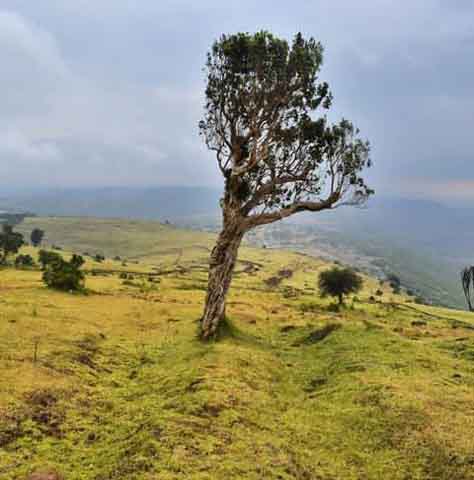
The Ngong Hills are peaks in a ridge along the Great Rift Valley, located southwest near Nairobi, in southern Kenya. The word “Ngong” is an Anglicization of a Maasai phrase “enkong’u emuny” meaning rhinoceros spring, and this name derives from a spring located near Ngong Town.
The Ngong Hills, from the eastside slopes, overlook the Nairobi National Park and, off to the north, the city of Nairobi. The Ngong Hills, from the westside slopes, overlook the Great Rift Valley dropping over 1,000 m (3,281 ft) below, where Maasai villages have been developed. The peak of the Ngong Hills is at 2,460 m (8,071 ft) above sea level.
During the years of British colonial rule, the area around the Ngong Hills was a major settler farming region, and many traditional colonial houses are still seen in the area. In the 1985 film Out of Africa, the four peaks of the Ngong Hills appear in the background of several scenes near Karen Blixen’s house. Local residents still reported seeing lions in the Hills during the 1990s. The solitary grave of Denys Finch Hatton, marked by an obelisk and garden, is located on the eastern slopes of the Ngong Hills, overlooking the Nairobi National Park.
There is a walking trail along the tops of the Ngong Hills. Kenya Forestry Service has a small post at the NE foot of the park. There is a KSH 600 fee for visitors. Local residents have sometimes held Sunday church services on the southern peak, overlooking the Great Rift Valley.
- Nairobi
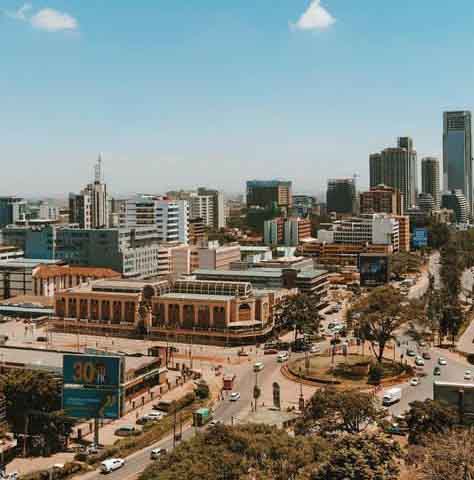
Nairobi is legendary for its colorful colonial history. It was once the capital of British East Africa, luring settlers who came here to stake their fortune in the coffee and tea industries. Today, you can explore the city’s famous historic sites and excellent wildlife-related attractions.
Craving some cultural attractions in Kenya? You will find several worthwhile places to visit in Nairobi. The Nairobi National Museum is a great one-stop spot to see exhibits on Kenya’s history, nature, culture, and contemporary art. Green thumbs will also enjoy the botanic gardens on the grounds. The Nairobi railway museum is another attraction to visit in Nairobi.
Another popular tourist attraction is the Karen Blixen Museum, the restored residence of the famous Danish author of the book Out of Africa, also known by her pen name, Isak Dinesen.
To see wildlife without venturing far from the city center, visit Nairobi National Park, now a black rhino sanctuary and also home to a diversity of other African wildlife.
Get cheap accommodations in Nairobi
- Maasai Mara National Reserve
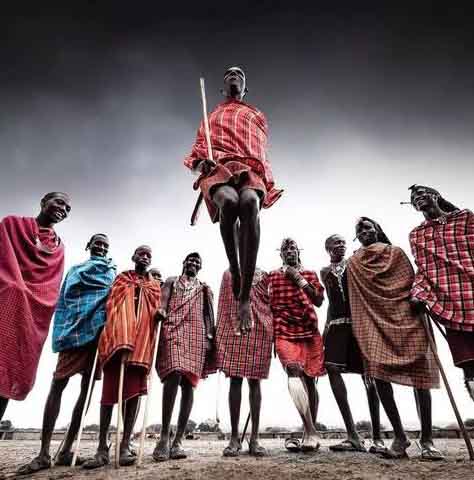
Maasai Mara National Reserve is one of Africa’s most magnificent game reserves. Bordering Tanzania, the Mara is the northern extension of the Serengeti and forms a wildlife corridor between the two countries.
It’s named after the statuesque, red-cloaked Maasai people who live in the park and graze their animals here, as they have done for centuries. In their language, Mara means “mottled,” perhaps a reference to the play of light and shadow from the acacia trees and cloud-studded skies on the vast grasslands.
The park is famous for the Great Migration, when thousands of wildebeest, zebra, and Thomson’s gazelle travel to and from the Serengeti, from July through October.
In the Mara River, throngs of hippos and crocodiles lurk. The park is also known for providing excellent predator sightings, thanks to its relatively large populations of lion, cheetah, and leopard – especially in the dry months from December through February. The park’s altitude, the weather here is mild and gentle year round.
Affordable accommodations in Maasai Mara National Reserve
- Kazuri beads factory
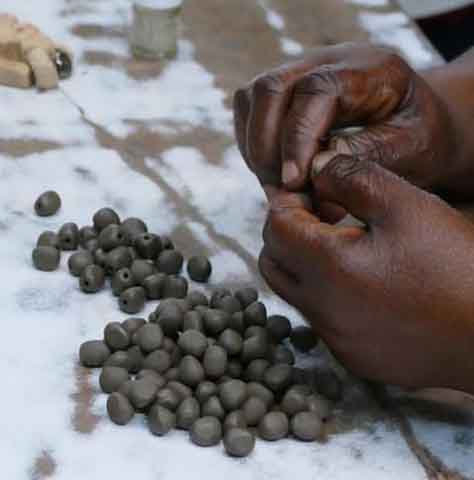
Although it is referred to as the Kazuri Bead Factory, it is really an artisan workshop where the beads for necklaces and bracelets as well as other pottery are created. Everything created by the artisans for Kazuri are handmade and hand-painted based on a preset pattern that each of the workers follow. In addition to creating beautiful jewelry and pottery,
Kazuri provides work for mostly single mothers and provides free medical care for their employees and their immediate family. Buying items from Kazuri, which are sold worldwide, is really an opportunity to get some something beautiful and help the people as well.
The factory’s name represents a deep meaning for Kenyans, meaning culture, tradition, folklore, encompassing the best of African crafts and is dedicated to supporting craftsmen from all over Kenya. It supports various charities including the KSPCA and Street boys (who actually have their own shop in the center).
There is also a small restaurant where one can stop for a quick bite. You will also get the chance to visit the busy Kazuri bead factory, a producer of top quality handmade and hand-painted ceramic jewelry and pottery. The workshop has been set up to empower women in need by employing them and teaching them a skill.
- Kakamega Forest National Reserve
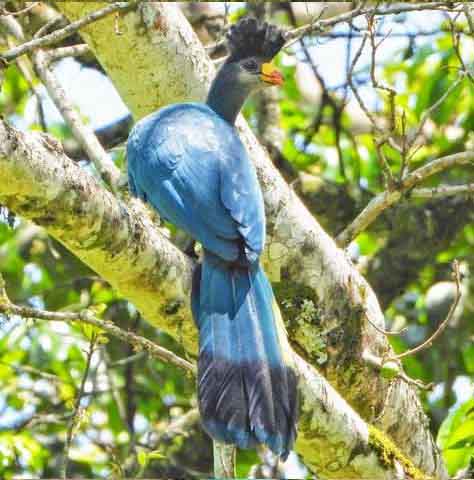
Kakamega Forest Reserve is one of the hidden gems of Kenya, far removed from the drama of the Big Five but with an intimacy all of its own. This is not the Kenya of safari brochures instead it is a place of intimate and unique beauty. The Kakamega Forest Reserve is a part of the Kakamega forest system of Kenya and thought to be the only Guinea-Congolian tropical rainforest left in the country, from what once stretched across Central and East Africa.
The forest is home to more than 300 bird species and an overwhelming 400 species of butterfly and these can be appreciated on walks and picnics in the reserve. Mammal species in the Kakamega Forest Reserve include Squirrels, Bush bucks, Aardvarks, Porcupines and Giant Forest Hogs. Primates are also plentiful in the forest. Other attractions include giant trees and spectacular waterfalls. There is a Fig Tree that is thought to be over 700 years old in the forest.
The forest has a network of hiking trails for visitors to enjoy one of Kenya’s most unique attractions.
- Watamu Beach
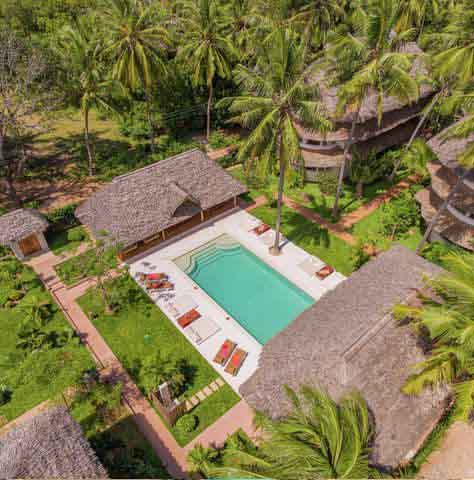
Featured by a blinding white-sand beach and a soft breeze, Watamu is a charming slice of coastline. The town has its own marine national park. Besides having natural endowments, magnificent dining scene, Watamu also makes it easy to explore the nearby Gede ruins, Arabuko Sokoke Forest Reserve and the waterways of Mida Creek.
The Watamu Beach is located at Watamu, a small town is located 105 kilometers north of Mombasa and 15 kilometers south of Malindi on the Indian Ocean Coast of Kenya, it lies on a small headland between the blue lagoon and Watamu Bay.
The Shoreline of the area features white sand beaches and offshore coral formations arranged in different bays and beach like Garoda Beach, Turtle Bay, Blue Lagoon Bay, Watamu Bay, Ocean Breeze, and Jacaranda beach, they are protected as they are a part of Watamu Marine National Park.
The Watamu beach has a unique coastline. The beaches are lined with tiny deserted islands. There are also sandbars that offer walkways to the islands. The white sand beaches are sprinkled with hermit crabs, starfish and more. The long beach has a shallow reef where you can enjoy snorkeling, see rays, octopus, deals and colorful fish.
These are the hotels and lodges near the Watamu Beach
- Malindi
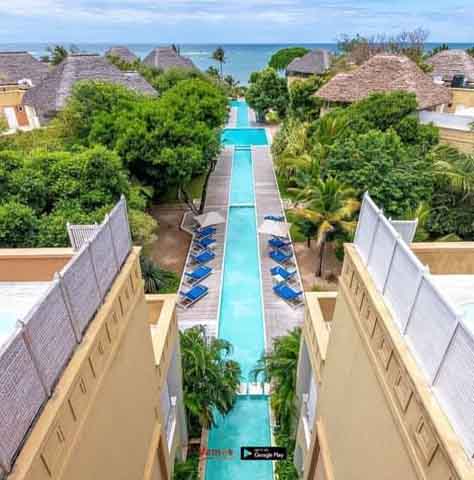
This popular beach town is part historic old town, part modern tourist hub. Thanks to its rich trading history, it is also a melting pot of cultures and cuisines. The town is located on the north of Mombasa along the coast of Kenya. This is where we have the Watamu Beach but Malindi Beach has the coral reef where travelers and surfers can enjoy beach life.
Also explore the Swahili history in the historic town which dates from the 12th century. In Malindi, travelers can visit the Jami Mosque which is part of the two pillar tombs from the 14th century and the Church of St. Francis Xavier also a part of East Africa’s oldest churches. Also is the oldest monumental cross of Vasco De Gama situated on the promontory.
Malindi has another popular tourist attraction which is the Falconry of Kenya, a rehabilitation center for sick and injured birds.
- Samburu and Shaba National Reserves
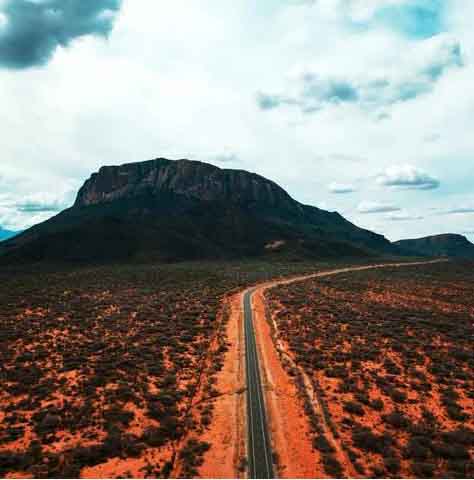
Shaba National Reserve is one of two areas where George and Joy Adamson raised Elsa the lioness, made famous in the film Born Free. On the banks of the palm-lined Ewaso Nyiro River, Samburu, Buffalo Springs and Shaba Reserves lie in an arid region in the remote north of Kenya.
The wildlife in all three reserves depends on the waters of the river to survive, and many species are specially adapted to the parched conditions. These include Grevy’s zebras; Somali ostriches; and gerenuks, the long-necked antelope that stand on two rear legs to reach the fresh shoots on upper tree limbs.
The major attraction in Samburu National Reserve, are the Sarara Singing Wells, local watering holes where Samburu warriors sing traditional songs while hauling water for their cattle to drink. You might also be rewarded with sightings of big cats and wild dogs.
Where to stay in Samburu National Reserve
Thank you for reading about Kenya tourism attractions.
Kindly follow our social media handles and let’s get interactive.
More Destinations To Explore
Best Things Do At Maasai Mara Reserve National Park
25 Best Festivals In Ghana To Witness
The Great Pyramids of Giza: History And Interesting Facts
12 Best Beaches In Ghana To Visit
Top Things To Do In Rwanda Kigali
Lalibela Churches: The 11 Oldest hurches in the world
Interesting Facts About Mount Kilimanjaro The Highest Point Of Africa
Travel Guide To Tanzania And Top Things To Do
